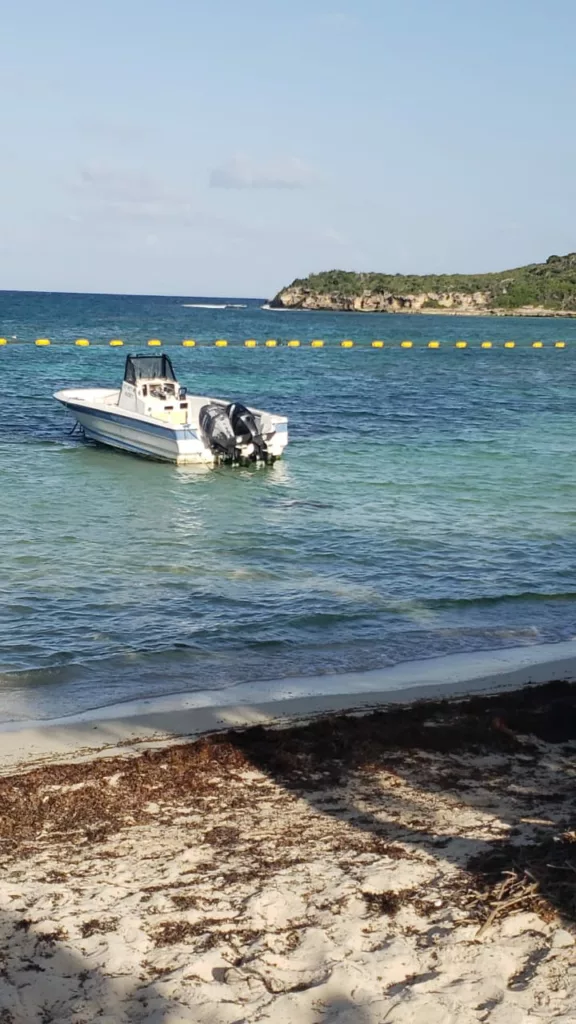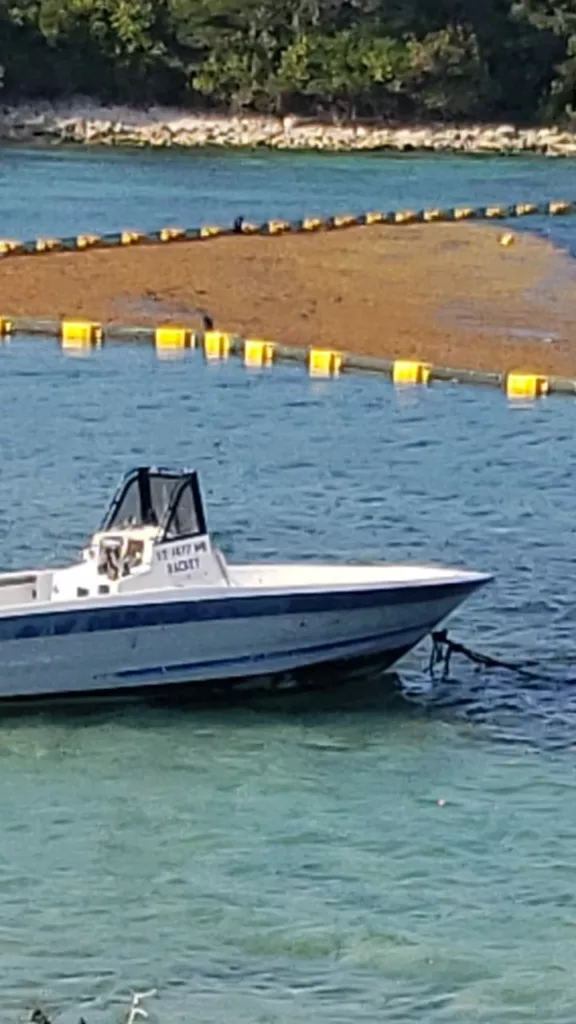
By Gemma Handy
Barriers erected at a key east coast fishing site in a bid to thwart invasive sargassum seaweed have ignited fury among local fisherfolk.
Fishermen who have used the waters around the exclusive Mill Reef Club for decades claim the barriers not only hinder their operations but also pose a danger to their boats and threaten the health of the coral reef.
Melvin Samuel, from nearby Freetown, says the problems – which date back several years – have been exacerbated by the club’s recent installation of new barriers which he claims have been tied directly to the reef to keep them in place.
“The barriers have been put up in such a way that it’s not sustainable and they are damaging the reef – this is the most important part of it all,” he tells Observer.
Samuel claims the vessel tasked with removing the captured seaweed cannot keep up with the sheer volume of the algae washing in from the open ocean.
“So it’s dying and falling down on the reef,” he explains.
Samuel also says the barriers reduce the amount of space available for fisherfolk to turn their boats around.
“It’s very dangerous to operate. The weight of the seaweed pushes the ropes up so if you’re coming in on a boat, the propeller can be caught up in the rope,” he says.
The Mill Reef Club is a 1,500-acre members-only club founded in 1947 that includes five miles of shoreline.


Sargassum, which first appeared in the Eastern Caribbean in 2011 and has become an annual phenomenon, decays once beached emitting a rotten stench. It poses a threat to tourism too, regularly washing up on some of Antigua’s most prized beaches.
Samuel, who is also President of the Spear Fishers Association, says his attempts to talk to club bosses about the problems – and pose a solution – have fallen on deaf ears.
Some of the fisherfolk want to erect a dock which they believe would mitigate the effects of the seaweed more effectively than the current method.
“We’ve been operating without a dock for all the years I have been fishing up there. If they approved a dock with boulders, it would help with the seaweed.
“I have been trying to explain to them over and over, but they don’t want fishers there so they don’t want input from us. And they don’t want no jetty there, because they say the jetty will carry down the value of their properties,” Samuel continues.
“Nobody is willing to do anything; we are basically hamstrung.”
Samuel says he has been fishing in the area for more than 50 years – and explains what makes it so special.
“Our forefathers fished up there before there was even thought of a Mill Reef Club. There are hatcheries and nurseries there that need to be protected.
“It’s where most of the grouper eggs end up – the same Nassau groupers they are trying to protect. That’s what makes up there so kind of fruitful,” he adds.
“We are just starting to see good results from the closed seasons now in place for lobster and parrotfish. Yes, the seaweed has complicated things but it’s manageable if done in the right way.”
A Mill Reef Club spokesperson declined to comment, citing ongoing talks with the government’s fisheries department.
Both the fisheries and environment departments have also been approached for comment.
